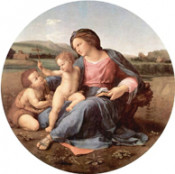
The Council of People’s Commissars of the USSR approved the decree “On the order of art and antique objects’ export”
One of the funding sources for the country industrialization in 1920-1930s was an active sale of art objects and museum collections. Initially the nationalized art objects sold abroad were not very famous, it was mostly the ordinary antiques. Later the Soviet government decided to sell the objects from the leading museums’ collections. In order to fulfill this task in February of 1928 the Hermitage and the Russian museum were proposed to provide a list of works for export which cost would amount to 2 million rubles. Under the aegis of the People’s Commissariat for Education was founded a special agency “Antiques” opened in Leningrad and taking charge of selling the objects.
On January 2, 1930 the Council of People’s Commissars of the USSR adopted a decree “On the order of art and antique objects’ export”. Under the decree these goods were not charged a special tax. The main idea of the Decree was:”The objects of art and antiquities including icons purchased by foreigners in the state shops as well as in the shops belonging to cooperative and social organizations are allowed to be exported abroad regardless of the article II of the General customs tariff on the export trade without any special permits from the Peoples’ commissariat of education of the union republics and without license upon presenting the appropriate shops’ receipts certifying where these goods were purchased. The custom duty due to receive for these goods is included into the price and is charged in the shops upon selling”.
Thus was officially opened the channel by which the objects of art of the very high artistic value, the masterpieces of the universal importance left Russia without obstruction. As a result the significant part of the pre-revolutionary Russia cultural heritage was lost. The Hermitage, that had become the main source for receiving money in order to finance the state policy, suffered the great losses.
The official sale of the pre-revolutionary cultural values at the state policy level of the 1920-1930s in combination with a constant illegal contraband of antiques, icons, artistic and archeological goods harmed significantly the cultural fund of the country and became one of the reasons for the cultural crisis.
Lit.: Жуков Ю. Н. Сталин: операция «Эрмитаж». М., 2005; Кантор Ю. Реальность и соцреализм: Эрмитаж в 1917-1941 гг. // Звезда. 2003. № 5; То же [Электронный ресурс]. URL: http://magazines.russ.ru/zvezda/2003/5/kantor.html.

